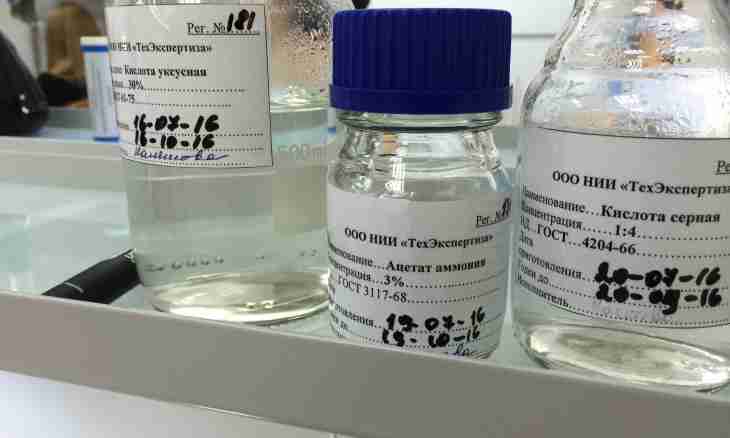Ammonium acetate – it is ammonium acetic – has chemical formula CH3COONH4. Its appearance – the colourless thin crystals which are quickly "blurring" on air. This extremely hygroscopic substance which is very well dissolved in water. Finds application in different industries – in organic and analytical chemistry, in laboratory business (as a component of buffer solutions), in the textile industry, in the food industry (as preservative), etc. How it is possible to receive ammonium acetate?
It is required to you
- - a flask dvugorly (or trekhgorly what will manage to be found) from a shlifama;
- - dividing funnel with shlify, suitable one of throats of this flask;
- - big container with cold water (it is better, if also with pieces of ice);
- - the concentrated acetic acid;
- - liquid ammonia;
- - glass funnel with the paper filter;
- - capacity for evaporation;
- - Byukhner's funnel with the paper filter.
Instruction
1. In a flask pour a little concentrated acetic acid (not less than 70%, 80% are better), insert into one throat a dividing funnel with liquid ammonia - hydroxide ammonium (for example, 10%). Then accurately place a flask bottom in a vessel with cold water and begin to flow gradually and slowly liquid ammonia, shaking up all contents of a flask from time to time.
2. Time of the end of reaction can be determined by a pungent, unpleasant smell of ammonia rather precisely: it means that liquid ammonia does not "communicate" acetic acid any more. Disconnect a dividing funnel, pour solution in capacity for evaporation, and remove liquid on a water bath. If it is visible that solution is polluted by mechanical impurity – better previously to filter.
3. After a while, when water will be evaporated, you will see the formed ammonium acetate. In most cases, it will be shapeless "bound together" weight – once again we will specify that acetate of ammonium is extremely hygroscopic! It is almost impossible to remove excess moisture with usual filtering and therefore is passed to resort to filtering on Byukhner's funnel with paper alcohol. It is necessary to transfer the formed crystals of acetate of ammonium quicker to the dry, densely closed capacity and to store in it.
4. If there is an opportunity, use the special laboratory mixer with the blade on the long rod which is passed through central "opening" of a trekhgorly flask from a shlifama it will save from need to stir up a flask manually. Certainly, in this case the flask has to be reliably fixed on a support.

